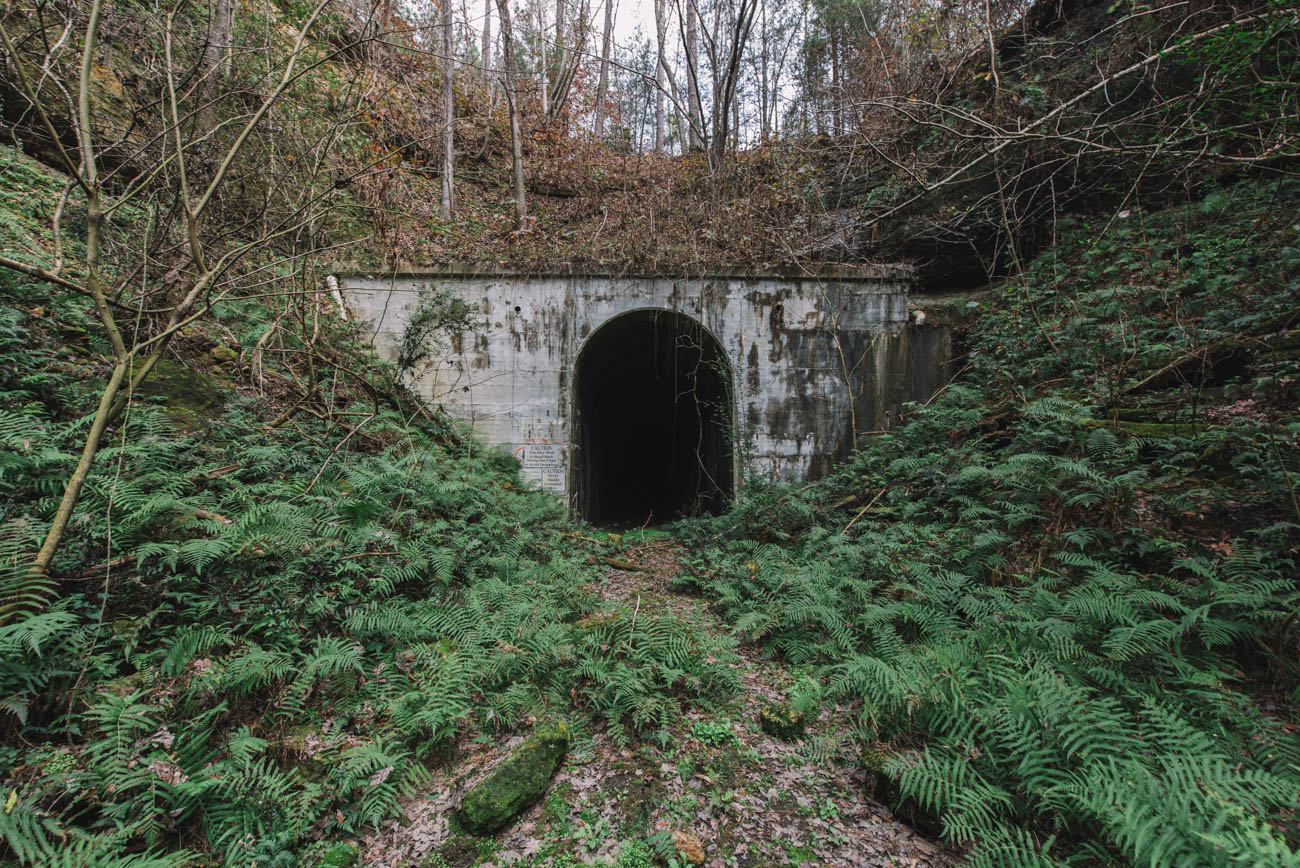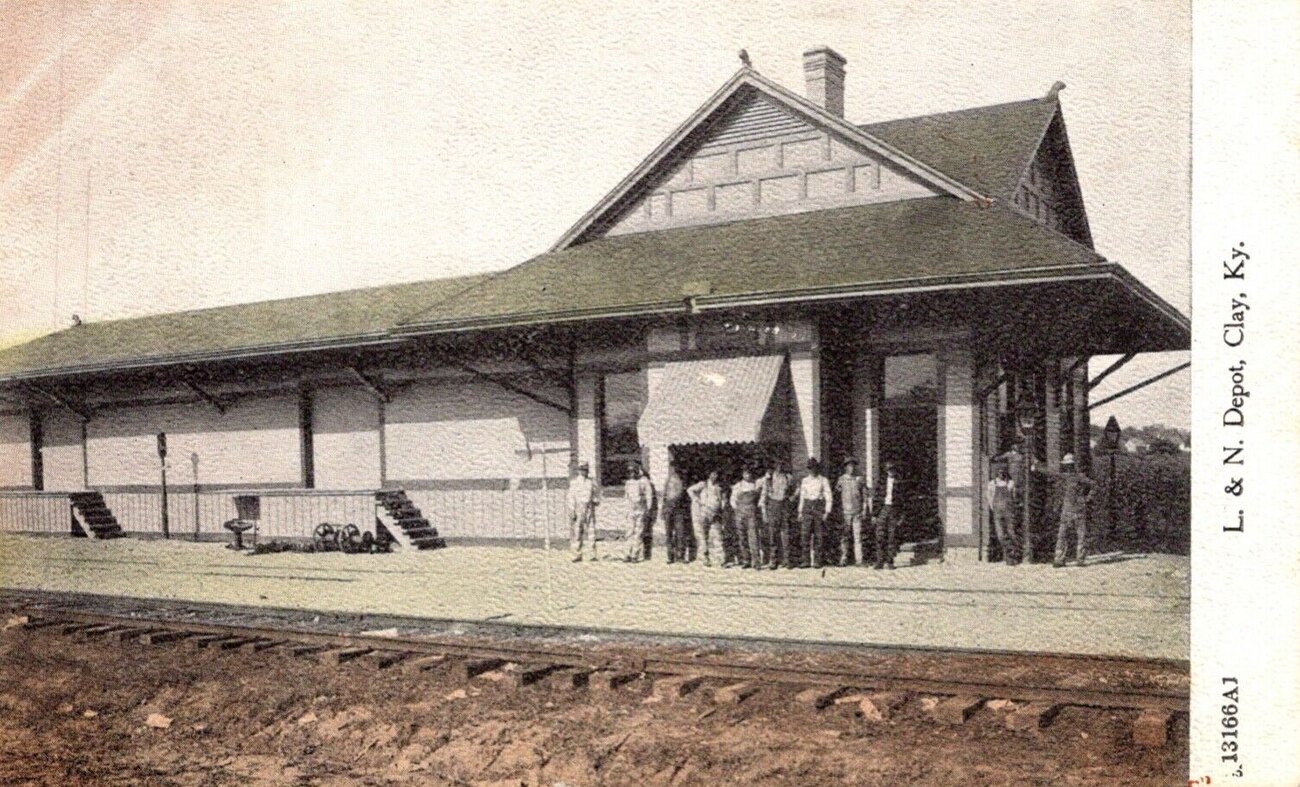| City/Town: • Tunnel Springs |
| Location Class: • Industrial |
| Built: | Abandoned: |
| Status: • Abandoned |
| Photojournalist: • David Bulit |
Table of Contents
Louisville & Nashville Railroad
The Tunnel Springs Rail Trail is part of the Louisville and Nashville Railroad (L&N) built in the mid-1800s. Chartered by the Commonwealth of Kentucky in 1850, the railroad’s first line extended barely south of Louisville, Kentucky, and it took until 1859 to span the 180-odd miles to its second namesake city of Nashville, Tennessee.
By the outbreak of the Civil War, there were about 250 miles of track in the system and its strategic location, spanning both Union and Confederate lines, made it of great interest to both governments. Throughout the war, the railroad network suffered considerable damage from wear, battle, and sabotage occurred. For example, The Battle of Lebanon took place in July 1863 and saw Union troops outnumbered by Confederate forces. In a final ditch effort, the Union troops utilized the railroad company’s depot in Lebanon, Kentucky as a stronghold.
However, the location of the Louisville and Kentucky Railroad Company in the Union state of Kentucky proved to be a significant advantage during the Civil War. Nashville, which was a major transportation hub, fell to Union forces within the first year of the war and remained under their control for the duration of the conflict. This allowed the L&N to profit from Northern haulage contracts for troops and supplies, which were paid in sound Federal greenbacks, as opposed to the rapidly depreciating Confederate dollars that were used in the South.
After the Civil War, many railroads in the South were left in a state of devastation and collapse due to the destruction caused by the war. However, the Louisville and Nashville Railroad Company was able to take advantage of this situation and quickly become one of the most successful railroads in the South. The company was able to obtain labor and materials to repair its roads fairly cheaply due to the general economic depression that followed the war.
The availability of cheap labor and materials allowed the L&N to rebuild its infrastructure quickly and efficiently. The company was able to expand its network and improve its equipment, which led to increased profits and success. The Louisville and Nashville Railroad Company also benefited from the increased demand for transportation caused by the post-war economic growth in the South.
The Louisville and Nashville Railroad’s success continued long after the post-Civil War period. The company grew from a small railroad with less than three hundred miles of track to a massive 6,000-mile system serving fourteen states. The L&N was able to extend its reach far beyond its namesake cities through the acquisition of smaller railroads, connecting major cities such as St. Louis, Memphis, Atlanta, and New Orleans. The Tunnel Springs Rail Trail was one of these lines which connected Montgomery with Mobile.
By 1982, the railroad industry was consolidating quickly, and the Seaboard Coast Line absorbed the L&N. During the next few years, several smaller acquisitions resulted in the creation of the Seaboard System Railroad. Further consolidations resulted in CSX Transportation which now owns and operates all of the former Louisville and Nashville lines, except for some routes abandoned or sold off.

Tunnel Springs Rail Trail
Tunnel Springs is an unincorporated community in Monroe County, Alabama, established in 1902 when a post office called Tunnel Springs was built. This post office remained in operation until it was discontinued in 1973. The old railroad tunnel part of the Tunnel Springs Rail Trail accounts for the name of the community. It has one site listed on the Alabama Register of Landmarks and Heritage, the Old Scotland Presbyterian Church.
This abandoned corridor between the towns of Tunnel Springs and Beatrice was one of the L&N lines. The railbanked section serves as a regional trailhead for those seeking rural outdoor recreation. Cyclists, hikers, runners, walkers, and other outdoor enthusiasts have a positive effect on nearby cities, towns, and communities by generating tourism traffic and increasing the local tax base.











